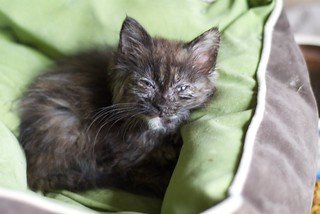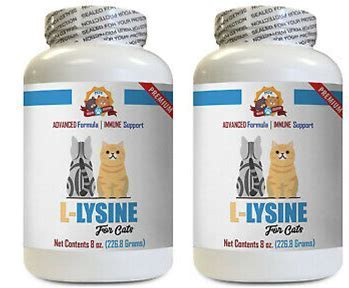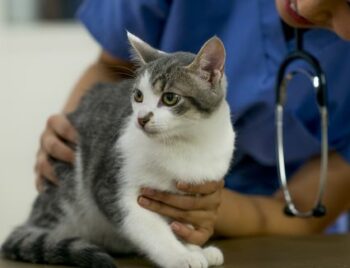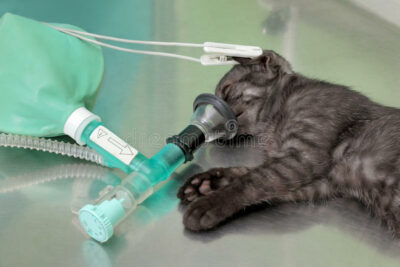Has your kitty ever had an upper respiratory infection? This illness, common in cats, though similar to a cold in humans, could well become much more serious. Causes stem from viruses or bacteria, targeting the upper airway: Nose, throat, and sinuses rather than lungs. You may find it important to know the treatment for upper respiratory infection in a cat.
What Are The Symptoms?
Symptoms can vary, but refer to this list to find out what those symptoms might be:

- Sneezing and coughing
- Congestion and/or runny nose
- Nasal and eye discharge, either clear or colored
- Gagging and drooling
- Fever
- Appetite decreases or disappears
- Ulcers, either nasal or oral
- Eye discomfort; squinting or rubbing
- Depression
- Lack of energy
- Voice becomes hoarse
About 80 to 90% of respiratory infections in cats are caused by viruses. Most of the rest can trace their cause to bacteria. Most often, the virus gets passed around in multi-cat households or at shelters.
Most Common Causes
You will find that two viruses provide the most common cause. These two make up nearly 90% of the infections seen in vet clinics. The two are feline herpesvirus and feline calicivirus.
a) Feline herpesvirus: A relative of the virus that causes chickenpox and cold sores in people. However, not to worry — you can’t get the virus from your cat.
b) feline calicivirus: This one, highly contageous, can cause mild to severe respiratory infection plus oral disease.
Other Causes
a) Feline chlamydiosis: A bacterial infection that causes runny eyes.
b) Bordetella: A bacterial infection caused by stress and overcrowded living conditions. It is more common in dogs.

c) Mycoplasma: Cats can pick up viruses from other infected cats. Such infections are spread easily, through direct contact such as touching and grooming, or when one cat coughs or sneezes on another.
When Should You See The Vet?
Though your cat may display some of the symptoms of a respiratory infection, very often, as with the common cold, the infection will resolve itself. Give a little time and attention to your kitty, and see if the problem will take care of itself.
However, be very watchful. If the infection amps up suddenly, it may well be time for the vet. Respiratory conditions can escalate quickly and become life-threatening. Watch for these serious conditions:
- Along with obvious trouble inhaling or exhaling, the cat’s breathing rate may be faster than usual.
- Perhaps kitty pants noisily with the mouth open, or coughs frequently.
- It’s common for cats to hunch forward with their head down, as if they are about to vomit.
- Severe breathing problems reach the danger zone if their gums turn blue. This occurs with a lack of oxygen, and kitty may collapse. Hopefully you head for the vet before this happens.
How Can You Comfort Kitty Without Visiting The Vet?
If your kitty still eats and remains active, you might help just with supportive care.
Give just canned cat food while your kitty doesn’t feel well, as this food won’t scratch the throat as much going down.
If kitty has congestion, warm the food slightly or add warm water to make a gravy. The smell will appeal more and may help keep kitty eating.
Bring kitty in the bathroom and run warm shower water. You might help loosen up some of that congestion.
Do not use over-the-counter products unless your vet recommends it. Most upper respiratory infections will run their course in 10 to 14 days.

Remember that these upper respiratory infections tend to be very contagious. Often a normal-looking kitten becomes adopted from a shelter, then starts sneezing in a few days.
How To Control Severity Of These Infections In A Group Of Cats
When bringing a new cat home, do the following:
Make sure all the cats in the household become fully vaccinated, preferably before the new resident arrives.
Quarantine the new cat for 10 to 14 days until she adjusts. You will achieve a two-fold purpose with this action. You can watch for any signs of disease in the new cat, and you will also reduce stress levels among all the cats, and they will have time to become acquainted slowly.
Wash food bowls and litter scoops during this time period, using bleach. Also, take care of the new cat last, then change clothes after the visit.
Remember that good preventive care and stress minimizing will go far toward keeping everyone healthy.
Possible Vet Treatments
Your vet may recommend some tests to better diagnose the respiratory infection. These could include:
- Blood tests: Narrows down the causes of your cat’s symptoms
- Eye or mouth swabs: From these, your vet can grow a culture to learn which virus or bacteria causes the infection.
- Electrolyte test: This one will show if your cat is dehydrated.
- XRay: If infections recur, the kitty may need a chest xray to find out what is happening to the cat. Also, if it is a fungal infection, an xray can help diagnose it.

How Do You Treat Feline Upper Respiratory Infections?
The vet can tell you the best treatment for your cat. These can include medication, isolation, rest, fluids from an IV, or nutritional support. If kitty gets a bacterial infection on top of the viral one, he may need antibiotics.
Please remember that it is important to treat such infections. If you don’t, it could turn into pneumonia or could result in other serious complications, such as blindness or chronic breathing problems.

Make sure to keep a close eye on your cat if she has a respiratory problem. Things can change very quickly, and if the cat’s symptoms seem to increase, get in to the vet as soon as you can. You don’t want this upper respiratory condition to get out of control.
However, with care, you may find your kitty fights off the infection without a vet trip. Just make sure you monitor kitty’s condition carefully. After all, your cat is part of your family, and family members should always have good care.
References I used for this post: pets.webmd.com/cats/guide/upper-respiratory-infection-cats petmd.com/cat/conditions/respiratory/treating-upper-respiratory-infections-cats onlynaturalpet.com/blogs/holistic-healthcare-library/natural-remedies-for-feline-respiratory-illness myanimals.com/health/respiratory-problems-in-cats-causes-and-symptoms/


Oh, I feel for the cats. I hate to see them sick, and your information is beneficial. I’m sharing this site with my family and friends.
Thanks, Alma, and I’ll appreciate your sharing. If you have a particular question about cats and their care that you would like me to research, please let me know. I’ll be happy to see what I can find out.